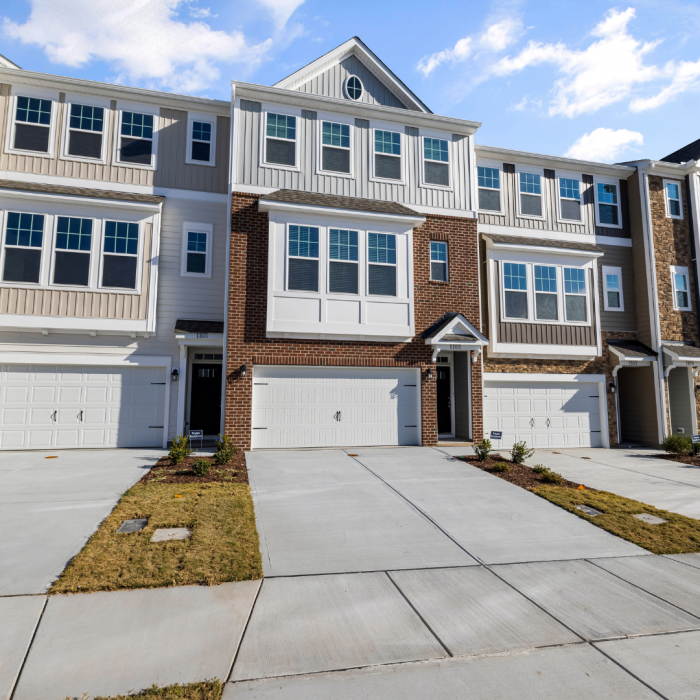
Leasing strategies aren’t one-size-fits-all, especially when you’re comparing urban and suburban markets. While the goal of filling vacancies remains the same, the journey renters take to get there can look dramatically different depending on where they live.
Urban renters often move fast, browse listings late at night on their phones, and expect immediate, automated responses. Suburban renters, on the other hand, tend to be more deliberate in their choices. They may be looking for larger spaces, evaluating school districts, and weighing community amenities they want. They’re often balancing family needs and want more detailed information, as well as more time to make a decision.
These behavioral nuances matter. If you’re using the same digital leasing playbook for both markets, you’re likely missing opportunities, wasting budget, or losing leads to more targeted competitors. When selecting the proper leasing channels, it’s equally important to avoid common automation mistakes that can deter qualified renters during the application process. To learn more about how these mistakes impact tenant acquisition, review the following lease automation pitfalls.
To lease smarter, not just harder, you need to meet renters where they are, using the platforms, messaging, and timing that align with how they search and decide.
In this blog, we’ll break down the digital leasing channels that work best in each market type, backed by real behavior data and platform insights. You’ll learn how to benchmark performance, optimize paid media, and adapt your strategy to drive conversions in both city centers and suburban neighborhoods.
What Urban and Suburban Renters Do Differently
Understanding how renter behavior shifts between urban and suburban markets is the foundation of any effective leasing strategy. The digital habits, decision timelines, and emotional drivers of these audiences are shaped by their lifestyles, and your marketing approach should reflect that. Lifestyle-based marketing helps tailor messaging around personal factors such as neighborhood identity and commuting habits.
Urban renters are typically younger, career-focused, and highly mobile. Many are students, recent grads, or professionals working in fast-paced industries. They’re accustomed to instant gratification, and they expect the same speed and ease when searching for an apartment.
- Mobile-first search behavior: The majority of urban renters begin their search on mobile devices. Whether they’re commuting, in between meetings, or scrolling in the evening, they want listings to be fast-loading, mobile-optimized, and easy to navigate.
- Quick decision-making: Lease cycles are often shorter in big cities, with many renters moving in and out within 12 months. This translates to fast decision-making, and many sign leases within 3–5 days of contacting a property.
- Emphasis on convenience: In competitive urban markets, apartment marketing should focus on convenience, walkability, and fast leasing to stay effective.
- Preference for automation: Urban renters often expect automated responses, online scheduling tools, and self-guided tour options. They are less inclined to wait for manual follow-ups and are more likely to move on if the process feels slow or clunky.
- Late-night browsing habits: Based on the latest RentEngine analysis, 56.8% of prospects are contacting you before work, after work, and on the weekends. Listings, paid ads, and chatbot responses should account for these after-hours behaviors.

Suburban renters are often older, with more stable incomes and long-term housing goals. Many are couples, families with children, or professionals relocating for work who plan to stay in the area for several years. Their leasing journey is slower, more considered, and deeply tied to lifestyle factors.
- Balanced device usage: Unlike their urban counterparts, suburban renters often move between mobile and desktop devices, researching during work hours on a computer and browsing casually on their phone at home.
- In-depth research process: School district ratings, safety scores, commute times, and neighborhood walkability weigh heavily on their decision. They often compare properties across multiple platforms and spend more time reviewing floor plans, photos, 3D tours, and resident reviews.
- Preference for human touch: Suburban renters value detailed, personalized communication, whether it’s a call from a leasing agent, a follow-up email tailored to their family’s needs, or a virtual tour with a live guide. They expect professionalism and responsiveness, but not necessarily automation.
- Daytime search patterns: Suburban renters are most active during business hours, often between 9 AM and 3 PM, making dayparted advertising and staffing schedules more effective for this audience.
Creating Ideal Resident Profiles
Before running ads or designing listing pages, define the type of residents you want to attract. An Ideal Resident Profile (IRP) helps shape your messaging, choose the right platforms, and focus your marketing efforts. Start by reviewing your most reliable tenants: those who paid rent on time, stayed for the long term, and were a good fit for your community.
For suburban properties, an IRP may include:
- Families with school-aged children
- Pet owners who want fenced yards
- Remote workers who need a home office
For urban properties, an IRP may include:
- Single professionals aged 25–34
- Commuters who rely on public transit
- Tech workers moving into the area
Step-by-step approach:
- Use leasing data. Review tenant applications and CRM records to spot patterns among your best residents.
- Include behavioral traits. Note how they prefer to communicate. Do they respond to email, or are they more likely to reply to text messages?
- Match platforms to profiles. Select content channels that align with the IRP. For example, use TikTok for Gen Z or Facebook for families.
- Test targeting. Build ad groups or landing pages around each profile and track results to improve your return on investment.
Paid Search Performance by Market Type
Paid search, such as Google Ads, is one of the fastest ways to reach renters actively searching for a place to live. However, the way you build and target your ads should differ in urban and suburban markets.
Urban renters are often in a hurry. They’re searching on their phones, scanning, and clicking on the listings that catch their eye first. In busy cities, the competition is high, so your ads need to be specific, local, and action-oriented.
Geo-targeted landing pages with hyperlocal content attract more apartment leads that convert into scheduled tours, especially when paired with mobile-first ads.
- Use branded and competitor keywords: Target search terms like your property name (e.g., “Skyline Lofts”) and similar nearby buildings (e.g., “Downtown Apartments near Google Campus”). This helps you stay visible when renters compare multiple options.
- Highlight urgency in your ad copy: Use strong calls to action, like “Tour Today, Move-In This Week” or “Limited Units, Apply Now.” Urban renters often make quick decisions, so use direct, fast-paced language to match their urgency.
- Add one-click mobile features: Include buttons that allow renters to call you or get directions with a single tap. This is especially effective near transit stops, tech offices, or university areas where renters are on the go.
Suburban renters tend to spend more time searching. They want to know about schools, safety, space, and long-term comfort. Your paid ads should directly address those priorities and appear when users are actively searching for relevant information.
- Use long-tail keywords: Instead of general terms like “2-bedroom apartment,” use more specific searches, such as “pet-friendly 2-bedroom near top-rated elementary schools in [City Name].” These attract qualified leads who know what they want.
- Time your ads carefully (dayparting): Suburban renters are most active during the day, particularly in the mid-morning and early afternoon hours. Utilize ad scheduling to display your ads during peak hours.
- Include review and amenity extensions: Utilize ad features that highlight what families value, such as resident ratings, community safety, parks, or school zones. These build trust before a renter even clicks your ad.
Social Media: Which Channels Work Where?
Social media is one of the most potent tools for showcasing what it’s like to live at your property. But just like paid search, what works on social platforms depends on your audience and location.
Urban renters, particularly Gen Z and Millennials, spend a significant amount of time on visually driven platforms like TikTok and Instagram. To attract urban millennial renters, you need a strong mobile presence, smart home features, and clear pricing. They respond to short, eye-catching content that shows off the lifestyle of city living.
- Focus on TikTok and Instagram Reels: Utilize short videos to showcase apartment features, building amenities, and local hotspots. Think quick room tours, rooftop views, or “a day in the life” of someone living there.
- Target smaller units: These renters are often looking for studios or 1-bedrooms. Content should focus on efficient layouts, smart storage, in-unit laundry, or walkable locations near transit and nightlife.
- Use lifestyle-focused hashtags: Tag your content with terms like #CityLiving, #StudioTour, #DowntownViews, or #WorkFromHomeVibes to reach renters already searching for that experience.
Suburban renters use social media differently. Attracting suburban renters is more effective when the message emphasizes long-term comfort, flexible layouts, and a sense of community. They may be older, have families, or be seeking more space and quiet. Facebook and Instagram work well here, especially for highlighting practical benefits and community life.
- Use carousel ads and static posts: These formats allow you to showcase multiple images or features simultaneously, such as spacious kitchens, playgrounds, pet areas, and garages. This is ideal for showcasing 2- or 3-bedroom units.
- Highlight what matters most: Feature schools, walking trails, dog parks, HOA perks, or nearby grocery stores. Suburban renters care about their surroundings just as much as they do about the unit itself.
- Retarget based on engagement: If someone saved your post or clicked through to your website, follow up with a new ad showing similar floor plans or a move-in special. This keeps your property top of mind as they research.

Listing Sites That Scale with Lease Volume
When it comes to high-traffic listing sites like Apartments.com, Zillow, RentCafe, and Zumper, how you show up matters. These platforms are where many renters start their search, so using them effectively can seriously boost visibility and lead flow. However, your approach should differ slightly depending on whether you’re marketing urban or suburban properties.
In urban areas, renter turnover is high, which means you’re constantly filling vacancies. The competition is fierce, and renters move quickly, so your listings need to stay fresh and easy to find.
- Automate your listings: Use tools that automatically update your pricing, availability, and images. Fresh listings receive better placement and demonstrate to renters that your property is active and ready.
- Stay on top in crowded ZIP codes: If you’re in a densely populated downtown area, consider boosting your listings to ensure they remain visible on the first page of search results. Even a small investment here can make a big difference when renters are scanning options on their phones late at night.
- Photos and speed matter: Include clean, well-lit images that load quickly on mobile. Renters are likely flipping through dozens of options, and yours should stand out in just a few seconds.
Suburban renters tend to take more time to explore each option, often seeking long-term homes. Understanding how to market suburban rental properties involves highlighting neighborhood stability, access to quality schools, and the benefits of long-term leases. Your listing should provide a comprehensive snapshot of life in the community, not just the square footage.
- Add enhanced content: Include 3D tours, amenity icons, proximity to schools, and neighborhood safety info. These small touches help renters picture their life in your space and make them more likely to reach out.
- Build credibility through reviews: Tools like Widewail or ReviewTrackers can gather honest resident feedback and display it in your listings, establishing trust from the start. Highlighting testimonials about quiet streets, great school zones, or helpful management teams can make your listing feel more personal and relatable.
Email and SMS Campaigns That Convert
Email and text messages are still some of the most powerful tools for nurturing leads, but only if you tailor the content and timing to match how your audience shops. One-size-fits-all doesn’t work here either.
In the city, speed is everything. Urban renters expect a prompt response; if you wait too long, you risk losing them to a competitor who responds first.
- Respond within 12 hours or less: Ideally, within a few hours. The faster you reply, the more likely you are to schedule a tour. Even a short text like “Thanks for your interest! We’ll follow up shortly with more info” can keep the lead warm.
- Utilize innovative automation tools: Platforms like Knock, RentDynamics, or Hy.ly can trigger personalized messages when someone views a floor plan or downloads pricing information. This kind of behavior-based messaging feels more helpful than spammy and keeps you top of mind.
- Short and mobile-friendly: Keep emails and texts brief, visual, and to the point. Use clear subject lines, large buttons, and links that open easily on mobile devices.
Suburban renters usually aren’t rushing. They take time to weigh options and appreciate a thoughtful, well-paced follow-up strategy.
- Drip campaigns work well: Set up a series of 3–5 emails spaced out over a few weeks. Begin with basic property information, then add more detailed information, such as school proximity, community events, and leasing incentives.
- Create gentle urgency: Use your messaging to build momentum without pressure. Phrases like “Only two units left in this floor plan” or “Don’t miss our open house this weekend” can motivate action without coming across as pushy.
- Answer unspoken questions: Suburban renters often have concerns about aspects such as noise levels, commute times, and parking availability. Proactively include that kind of info in your messages, it shows you understand what matters to them.

Where OTT and Display Ads Fit Best
Over-the-top (OTT) and display advertising can play a valuable role in your leasing strategy, but how and where you use them should align with your audience’s habits. For suburban renters, OTT ads on SmartTV platforms like Hulu, Roku, or Amazon Fire TV work exceptionally well. These households are more likely to be streaming shows during evening hours or weekends, often with families. Ads that appear during this prime time, especially those that emphasize quiet neighborhoods, pet-friendly amenities, or proximity to good schools, can leave a strong impression without feeling intrusive. It’s a subtle yet effective way to introduce your property in a relaxed and familiar environment.
In contrast, urban renters are often more mobile and on the move. Platforms like Spotify and in-app display ads on news, gaming, or transit apps perform better with this audience, especially during commute hours or late at night. Urban renters are regularly listening to music on their way to work or checking apps on public transit, making mobile retargeting a key strategy. Pairing location-aware display ads with timely messaging, like “Now Leasing Near Downtown” or “Last Studio Left in SoMa,” can create urgency and relevance without requiring a hard sell.
Micro-Market Mapping
Not every neighborhood fits neatly into “urban” or “suburban” categories. A high-density area near a commuter rail may seem suburban based on its demographics, but it acts more like an urban hub focused on transit. In contrast, edge neighborhoods in cities with low turnover and family-friendly amenities may respond better to messaging designed for suburban areas. This is where micro-market behavior mapping is beneficial.
Instead of using only zip codes or city boundaries, many property managers now group renters by behavior patterns that reflect daily habits and influence leasing choices. Here’s how to use a micro-market approach:
1. Segment by Lifestyle Behaviors, Not Just Geography
Ask: How do renters live in this area? Use real behavioral signals, such as transportation habits, browsing times, and device usage, to align marketing channels with how people search for homes.
If renters drive to work and live near schools, focus on SEO landing pages, Facebook carousel ads with family-related content, video ads on platforms like Hulu and Roku, and Google Display ads with strong visuals.
If renters walk to local cafes or take public transit, use mobile-first strategies. Share TikTok videos and Instagram Reels that highlight nearby amenities. Also run mobile Google Ads with location extensions and banner ads in apps like Waze.
If renters work from home and browse during the day, consider sending email campaigns with mid-funnel content, retargeting on LinkedIn with amenity-focused ads, utilizing Facebook video tours, and enhancing SEO with blog posts that focus on remote-friendly benefits.
2. Add Local Behavior Insights
Use local data tools like Placer.ai and Spatial.ai to add behavior trends to your renter segments. For example, in areas marked as “Prosperous Families,” Facebook remarketing and video streaming ads are effective. In places labeled “Trendsetting Millennials,” Instagram Reels and TikTok videos get better results.
Budget Planning by Market
- Urban campaigns need quick exposure:
- Invest in channels that deliver rapid reach, such as paid search, mobile display ads, and social media.
- Focus on tactics that catch renters while they’re actively searching or browsing.
- Prioritize short-term bursts of visibility to capitalize on quick decision-making.
- Invest in channels that deliver rapid reach, such as paid search, mobile display ads, and social media.
- Suburban campaigns require trust-building:
- Allocate budget toward platforms that nurture leads over time, such as enhanced listings and review sites.
- Utilize remarketing and longer-form content to establish trust and showcase community benefits.
- Focus on consistent presence that supports slower, more deliberate renter journeys.
- Allocate budget toward platforms that nurture leads over time, such as enhanced listings and review sites.
- Build a balanced 30-day media plan:
- Mix quick-reach and long-term tactics tailored to each market.
- Adjust budget allocations based on renter behavior and lease urgency.
- Monitor results regularly and adjust spending to focus on what drives the best engagement.
- Marketing to urban and suburban renters should reflect differences in urgency, amenity preferences, and leasing triggers between the two groups.
- Mix quick-reach and long-term tactics tailored to each market.
Urban vs. Suburban Channel Fit Matrix
- Device preference:
- Urban renters: Mostly mobile-first, browsing on phones.
- Suburban renters: Use a combination of mobile and desktop devices.
- Urban renters: Mostly mobile-first, browsing on phones.
- Lease urgency:
- Urban renters: Make decisions quickly, expect fast responses.
- Suburban renters: Take more time, appreciate detailed information, and follow up.
- Urban renters: Make decisions quickly, expect fast responses.
- Desired content:
- Urban renters: Prefer short, visual, and dynamic content (videos, reels, quick tours).
- Suburban renters: Value detailed, informative content (3D tours, school info, neighborhood data).
- Urban renters: Prefer short, visual, and dynamic content (videos, reels, quick tours).
- Trust signals:
- Urban renters: Favor automation, instant messaging, and self-service tools.
- Suburban renters: Rely on reviews, personal follow-up, and community testimonials.
- Urban renters: Favor automation, instant messaging, and self-service tools.

Avoid These Market Mismatches
It’s easy to fall into the trap of treating every renter the same, but mismatched marketing can cost you both leads and credibility. One common mistake is using desktop-only landing pages for urban audiences who are browsing on their phones. If your site takes too long to load or isn’t mobile-friendly, you could lose renters before they even see your photos. Another misstep is relying heavily on Facebook for younger, Gen Z renters in urban markets. While Facebook works well in suburban areas, city renters are often more active on platforms like TikTok, Instagram, or others that cater to trends.
The biggest pitfall is running the same creative across all markets. A one-bedroom apartment downtown and a three-bedroom home in the suburbs solve very different problems for different people. Your messaging, visuals, and calls to action should reflect that. The bottom line is that when you align your marketing with how real renters behave, by market, mindset, and lifestyle, you’ll lease faster, more efficiently, and with a significantly better return on investment (ROI).
Improve your apartment’s digital marketing today!
Categorised in: Apartment Marketing
This post was written by Isabella Housel
Isabella Housel is a passionate and versatile professional writer with a deep love for words and a commitment to crafting compelling content that engages, informs, and inspires. With many years of experience in the industry, she has honed her skills across various genres, from creative storytelling to informative articles and technical documentation.





